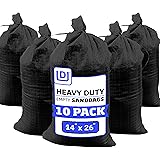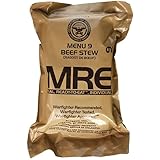Determine Your Needs
Assess Your Environment
First things first, you gotta know where you are. Whether you’re at home, at the office, or out in the wild, understanding your environment is crucial in shaping your first aid strategy. For instance, a hiking trip comes with its own set of risks as opposed to a day at the beach. Think about common injuries that could happen in your particular setting.
Once you’ve identified potential risks—like cuts, scrapes, sprains, or other bumps and bruises—you can prepare your first aid kit accordingly. If you’re frequently outdoors, maybe add some antiseptic wipes or insect repellent. On the other hand, if you spend a lot of time at work, perhaps you should stock up on burn ointment and bandages.
Each environment has its quirks, right? Like, if you have pets at home, adding pet-related first aid supplies makes perfect sense. I mean, what’s a first aid kit without the ability to help a furry friend in distress? Understanding your needs is where it all starts, and it’s super important!
Gather Essential Supplies
Choose the Right Kit
I can’t stress enough how vital it is to choose the right first aid kit. Not all kits are created equal, you know? Depending on your needs, you might want to get a ready-made kit or even assemble your own. I prefer customizing my own because it means I have everything I could possibly need at my fingertips!
When you’re picking out supplies, think about what’s most common in your life. If you have kids, include items like adhesive bandages in fun colors or cartoon designs to make boo-boo healing a bit less traumatic. If you frequently cook, consider adding some special burn pads for those kitchen mishaps. Look out for those little things that can really make a big difference!
Don’t forget about checking expiration dates! A first aid kit is only as good as the supplies inside. I always do a thorough check of my kit every six months to make sure everything is up to snuff. Nothing’s worse than needing a bandage only to find it’s expired; trust me, I’ve been there!
Know Basic First Aid Techniques
Take a Class
Now, having a first aid kit is great, but knowing how to use it? That’s even better! I highly recommend taking a basic first aid class. It’s like learning how to ride a bike; once you know, you’ll never forget. Most places offer these courses, and often they’re pretty affordable.
In these classes, I learned not just how to use bandages but also vital techniques like CPR, wound care, and how to help someone in shock. These skills can make a world of difference in emergency situations. Plus, you gain confidence knowing you’re prepared to help if someone gets hurt.
== > What if ... Get a FREE Subscription to PREPARE
Sometimes, the knowledge gained in those classes has been more useful in day-to-day life than I ever expected. I’ve even found myself using what I learned to soothe minor injuries in kids on the playground or to guide a friend through applying a bandage efficiently. It’s empowering!
Practice Your Skills
Stay Sharp
Okay, so you’ve got your kit and you’ve taken a class; now what? Practicing those skills regularly is a must! I make it a point to revisit what I’ve learned every once in a while. It’s easy to forget things if you don’t use them, right? So, I ran through scenarios with friends and family, pretending someone has a cut or a sprain and walking through my responses.
Get Preparedness and Self-Reliance Tips. Subscribe Now!
Not only does it keep my skills sharp, but it also makes everyone a tad more comfortable should something happen. Plus, it’s kind of fun to do a mock scenario. You could even recruit some family or friends and turn it into a fun little group activity!
Consider setting aside specific times during the year to refresh your first aid knowledge. It turns out, you can even find online resources or apps that simulate emergency scenarios to practice how you’d respond. It’s all about staying sharp and ready—just like a boy scout!
Stay Informed and Updated
Continuously Learn
Lastly, let’s chat about the importance of staying informed. First aid isn’t a one-and-done deal; medicine and techniques evolve over time. So, I make it a habit to read articles or subscribe to newsletters that discuss the latest in first aid and emergency responses. It’s amazing what new tips and techniques can pop up!
Also, if new items become available for your first aid kit, don’t shy away from keeping your supplies up-to-date. Maybe there’s a new revolutionary product in first aid. Keeping abreast of developments not only aids you in personal emergencies, but it also means you can help others better.
And you know what else? Engaging with a community, whether online or in person, can open the door to new insights. You’d be surprised at the effective strategies you can learn from others who have faced emergency situations. Sharing experiences is invaluable and enhances everyone’s knowledge!
Frequently Asked Questions
What should I include in my first aid kit?
Your first aid kit should generally include adhesive bandages, antiseptic wipes, gauze pads, adhesive tape, scissors, tweezers, a digital thermometer, pain relievers, and any personal medications. Tailor it to your needs based on your environment!
How often should I check my first aid supplies?
It’s a good idea to check your first aid kit every six months. Make sure that all supplies are in good condition and within their expiration dates. A little upkeep goes a long way!
Can I really learn first aid online?
Absolutely! There are tons of reputable organizations offering online first aid courses. Just ensure that they’re certified and teach current best practices. Online learning can be quite effective!
What should I do in a first aid emergency?
If you find yourself in an emergency, stay calm and assess the situation. Make sure it’s safe for you to approach. Provide care based on what you learned in your training and utilize your first aid kit appropriately.
Are there any special considerations for kids or pets?
Yes! Treating kids and pets can require special attention. For kids, making the experience less traumatic can involve having colorful band-aids and explaining what you’re doing. For pets, be aware of their specific needs and possible reactions when hurt.






